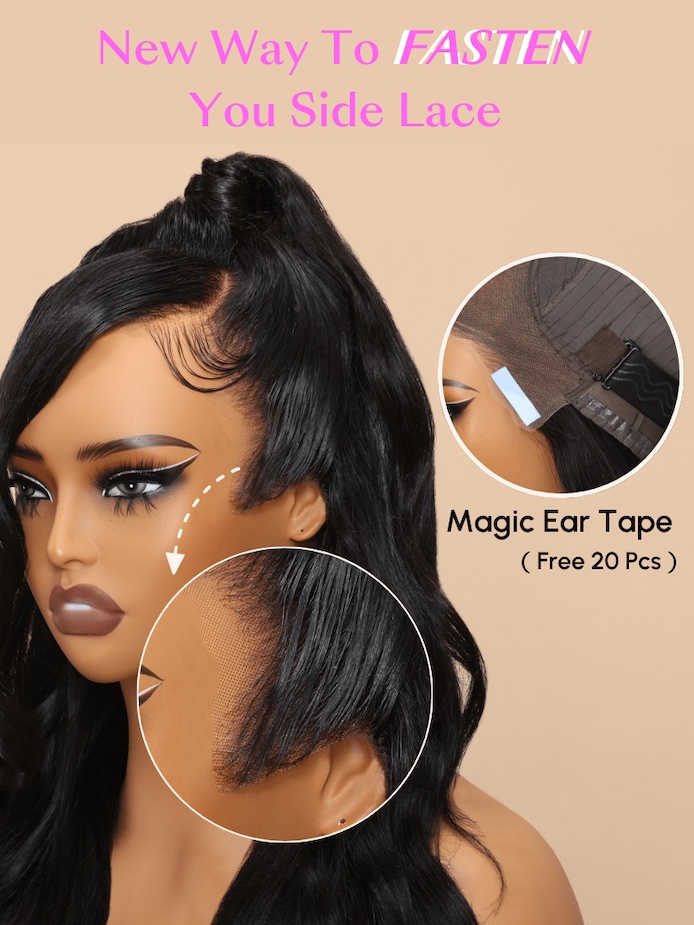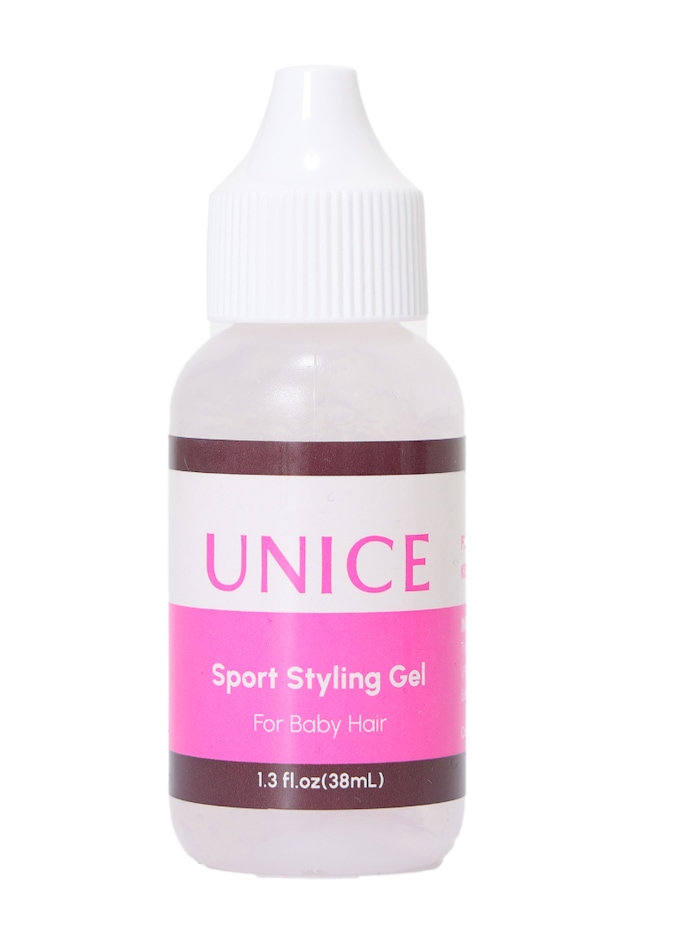When installing hair wig, you can choose to use the tape or glue you like. Experienced customers already know which attachment method works best for them, but many new clients are unsure which attachment method will work best. Lace Wig Adhesive, Which Is Better Tape Or Glue? What is the best lace wig adhesive? Do you know how to choose between them? Is glue better than the tape? In this guide, we'll explore the differences between these two adhesives and help you determine which one suits your needs best.
3. Key Differences Between Wig Tape and Wig Glue
4. How to Between Wig Tape and Wig Glue?
5. Tips for Applying Wig Tape and Wig Glue
What is the Wig Tape?
In order to meet customers' demand for quick glueless installation of lace wigs, such as lace front wigs, we have recently launched pre-everything wigs. The biggest feature of this wig is that it is equipped with ear tapes to help instantly flatten your hair with the new design magic ear tape. For questions about UNice ear tapes, please check FAQs About Ear Tapes on UNice Pre-everything Wigs.
The wig tape is the easiest for most people to use and has little to no mess. Tapes are available on rolls or in pre-cut to match the shape of the attachment area. Tapes are clear and come in several liner colors that indicate the degree of tackiness.
Types of Wig Tape

· Lace front tape: Transparent and designed to adhere to the lace front of the wig, providing a seamless look.
· Medical-grade adhesive tape: Hypoallergenic and suitable for individuals with sensitive skin, offering a strong hold without causing irritation.
Pros and Cons of Using Wig Tape
◆ Pros:
Easy to apply and remove
Ideal for daily wear
Suitable for individuals with sensitive skin
◆ Cons:
May require frequent readjustment, especially in humid conditions
Less durable compared to wig glue
What is the Wig Glue?
Wig glue, also known as wig adhesive or bonding glue, is a liquid adhesive formulated to secure wigs onto the scalp for an extended period. It creates a strong bond between the wig and the skin, ensuring a secure fit.
Glue can be very, very messy to work with. Glues are available in brush-on, squeeze-on, or dab-on.
We found the best application method is to use a popsicle stick which can be purchased a most arts and crafts stores.
Clear glue is solvent-based, goes on clear, and dries clear. They typically give a better hold time than white glues but can be more irritating if you have sensitive skin.
White glue is water-based and goes on white and dries clear. They are recommended for clients with sensitive skin but can be used by anyone. If you have an active lifestyle or sweat a lot, the white glue can turn white when you perspire.
Types of Wig Glue

· Water-based wig glue: Easy to remove with water and suitable for individuals with sensitive skin.
· Solvent-based wig glue: Provides a stronger hold and is more resistant to moisture and sweat.
Pros and Cons of Using Wig Glue
◆ Pros:
Offers a long-lasting hold, even in challenging conditions
Provides a secure fit for high-activity situations
Suitable for individuals with oily skin
◆ Cons:
Can be challenging to remove, especially solvent-based glue
May cause skin irritation or allergic reactions in some individuals
Key Differences Between Wig Tape and Wig Glue
Adhesion Strength
Wig glue typically provides a stronger hold compared to wig tape, making it ideal for individuals with active lifestyles or those who require long-term wear.
Application Process
Wig tape is relatively easy to apply and remove, while wig glue requires more precision during application and may take longer to dry.
Durability
Wig glue offers greater durability and resistance to movement and environmental factors, such as humidity and sweat, compared to wig tape.
Residue
Wig tape leaves minimal residue upon removal, whereas wig glue may require additional steps to dissolve any leftover adhesive.
How to Choose Between Wig Tape and Wig Glue?
Skin Sensitivity:
Individuals with sensitive skin may prefer wig tape or water-based wig glue to minimize the risk of irritation.
Hairstyle and Wig Type:
Certain hairstyles and wig types may require a stronger hold provided by wig glue.
Duration of Wear:
For short-term wear, wig tape may suffice, whereas wig glue is preferable for long-term or extended wear.
Activity Level:
Those with an active lifestyle may benefit from the stronger hold offered by wig glue, especially during physical activities.
Tips for Applying Wig Tape and Wig Glue
◆ Cleanse and dry your skin before applying the adhesive.
◆ Apply adhesive sparingly to avoid excess buildup.
◆ Press down firmly to ensure a secure bond.
◆ Allow wig glue to dry completely before styling or securing the wig.
Removing Wig Tape and Wig Glue Safely
◆ Use an adhesive remover or oil-based cleanser to dissolve wig glue gently.
◆ Peel off wig tape slowly to minimize discomfort and potential skin irritation.
◆ Cleanse the skin thoroughly after removal to remove any residual adhesive.
Frequently Asked Questions about Wig Glue and Wig Tape
Can I swim or shower with a wig secured using wig tape?
It's best to avoid submerging your wig in the water while wearing wig tape, as it may cause the adhesive to weaken. Waterproof wig glue may offer a more secure hold for water-related activities.
How often should I replace wig tape or wig glue?
It's recommended to replace wig tape or reapply wig glue every few days, depending on factors such as sweat, oil production, and environmental conditions.
Can I use wig tape or wig glue on all types of wigs?
Wig tape and wig glue are generally suitable for most types of wigs, including synthetic and human hair wigs. However, always check the manufacturer's recommendations for compatibility.
Is it safe to sleep with a wig secured using wig tape or wig glue?
While it's possible to sleep with a wig secured using adhesive, it's not recommended for prolonged use, as it can cause discomfort and may affect the longevity of the adhesive.
How do I know if I'm allergic to wig tape or wig glue?
Perform a patch test by applying a small amount of adhesive to a discreet area of the skin and monitoring for any adverse reactions, such as redness, itching, or irritation.


